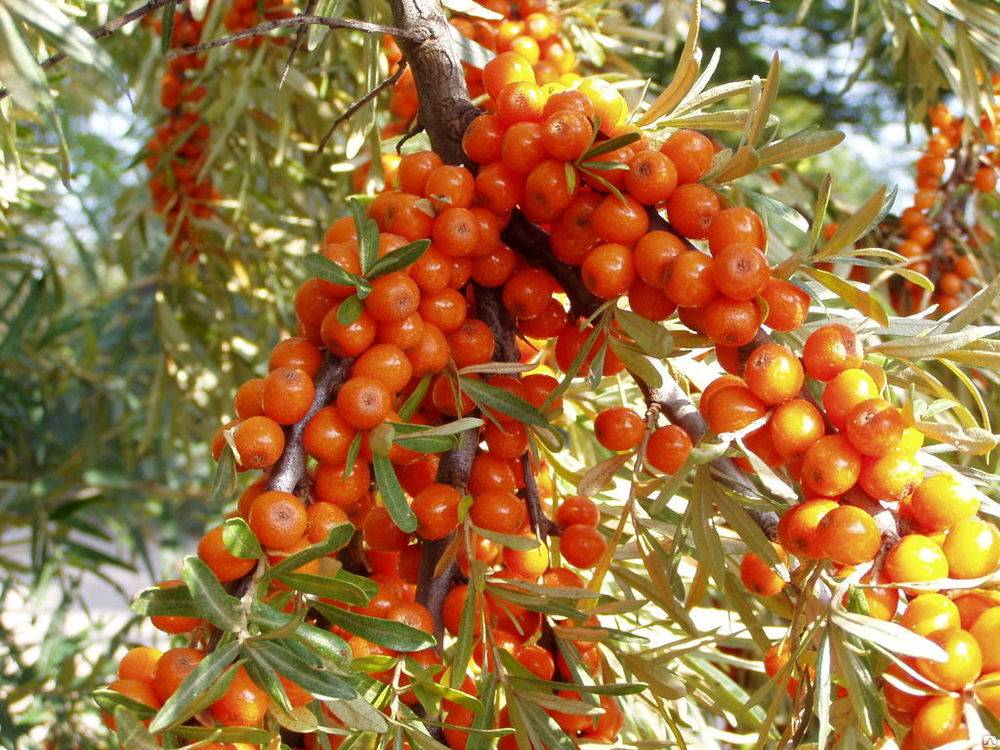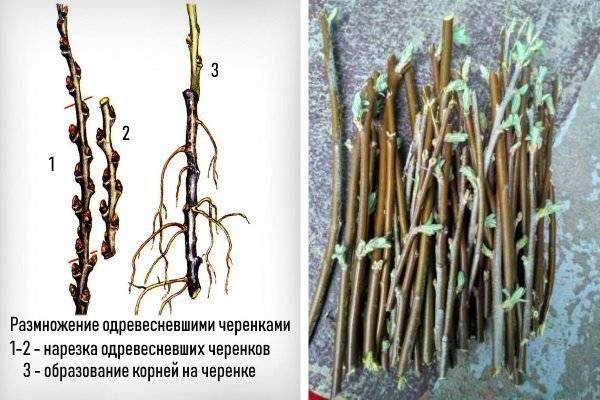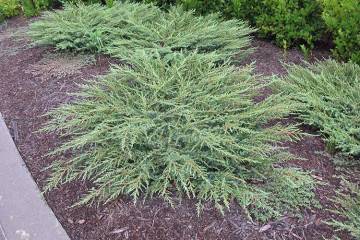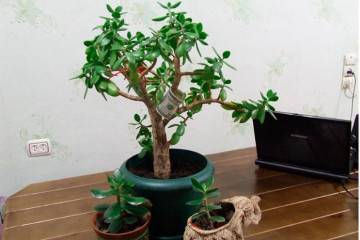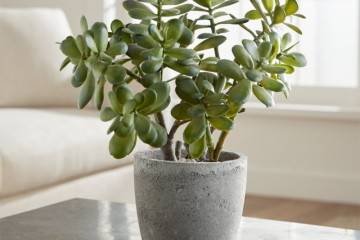Is sea buckthorn a tree or a shrub? Growing sea buckthorn at home
Content:
Growing sea buckthorn at home is a simple process if you take into account the information and recommendations below. Sea buckthorn is a tree or shrub that grows almost everywhere and depending on the species.
The origin and appearance of sea buckthorn
The origin of the plant is legendary. The name from Latin is deciphered as consisting of two words: "horse" and "gloss" ("Hippophae"). It is connected with the fact that during the A. Macedonian period, tired sick horses were boiled a drink from sea buckthorn, which restored strength to the army horses.
Sea buckthorn attracted special attention in about 20 years. 19th century, when it appeared in the collection of the Petersburg Botanical Garden. At that time, it was first possible to grow her, after which a whole class was formed. Then in the catalog it was attributed to winter-hardy plants that bear fruit well.
It was brought from Kansu by NM Przhevalsky. In his report, he argued that different types of sea buckthorn also grew in the Himalayas. It was the Petersburg Botanical Garden that adapted the plant to Russian conditions.
Popular types
Among gardeners, the following varieties are in great demand.
Chuiskaya
This species is a herbaceous shrub with a wide spreading crown. It reaches three meters in height. Chuy sea buckthorn bears fruit well, which is why gardeners often choose it. It is noteworthy that it can be grown in different climate zones: from Kaliningrad to Kamchatka.
Abundant
This sea buckthorn variety is distinguished by its large fruits. They have a pleasant sweet and sour taste and a dark orange cylindrical shape. It ripens, as a rule, at the end of August. Fruiting often begins only in the fourth year after planting. At the same time, there are many fruits, they appear annually.
In the choice of soil, the variety is undemanding. The main thing is to water the young bushes abundantly.
Orange
Orange sea buckthorn is locally located in the Altai Territory. The bush looks like a small tree, as it exceeds the average size of the bush. The fruits also have an average size, about 0.7 g. At the same time, the taste is sweet and sour with a little astringency. The orange variety bears fruit in the fall as well as the plentiful one in the fourth year after planting.
Oilseed
This species grows mainly in the Urals. It has a branched crown and slightly thorny shoots. Representatives of this variety bear fruit with small brown-red fruits. Their pulp is sour, so the taste is 4 points. The bush begins to bear fruit in the third year.
Giant
The giant has no bones on the shoots. Among the advantages of this come down are frost resistance, drought resistance, large-fruited. At the same time, it does not bring a large harvest, and the seedlings grow slowly.
Gift of Katun
This type of sea buckthorn grows mainly in the northern regions. The bushes reach a height of three meters, while the crown itself is compact.Katun's fruits are small, often sour, but not bitter. The variety is resistant to diseases and pests. The fruiting period is 3-4 years after planting.
Ear of gold
The ear of gold is distinguished by its drought tolerance. It is medium in size with a small crown. It is noteworthy that the fruits are not very tasty, as they are moderately sour. They are small to medium in size. The tree, like other species, bears fruit for 3-4 years after planting.
Altai news
Altai news - wild sea buckthorn. The fruits of this variety are medium orange-yellow in color. They have a pleasant sweet and sour taste and thin skin. Their ripening period is average.
What is needed for landing
For a successful planting of sea buckthorn, you need to comply with some requirements, as well as take into account some points:
- since male representatives of sea buckthorn die more often, gardeners plant more male than female specimens in number;
- a male seedling is surrounded by a female one when planting, because he alone is able to pollinate 5-8 bushes;
- gardeners advise planting seedlings of the same variety;
- within a radius of 2 m from the bush, agrotechnical work is not carried out, since the sea buckthorn roots do not reach great depth.
Choosing the best place
The place where the sea buckthorn will be planted should be sunny and open, without shade. It is not worth placing bushes next to garden beds, as you can damage the roots when digging up the soil.
Sea buckthorn does not like the neighborhood with trees. In the garden, it is usually planted on the edge on the south side.
Step-by-step planting process
Sea buckthorn propagates by cuttings. If we consider the process step by step, then it looks like this:
- The landing pit is breaking out. It should be cubic, 40 cm in size on each side. Humus is added to the soil from the pit along with phosphorus and potassium. All this is poured into the pit.
- For planting, a slide is made, on which the seedling is placed and the roots are straightened. After that, the soil is filled up, and the earth is compacted.
- The stalk is watered, and the trunk circle is mulched.
Reproduction of sea buckthorn
There are various ways of breeding sea buckthorn. Among them, they are distinguished by seeds, layering, dividing a bush, shoots, cuttings. The most expedient and topical of them is the last one.
Propagation by cuttings
This type is the most common, as it allows you to quickly get the same result as in the nursery. Lignified cuttings are branches of a plant that have fallen into hibernation and have been cut off. They are usually harvested in November. The branch thickness should not be more than 5 mm. They are placed in a cool place and stored until spring.
In the spring, they are placed in water for 2-3 days. After that, they are placed in a solution that allows them to form roots. When the roots appear, you can start planting. The soil temperature should be from 10 ° C at a depth of up to 10 cm. The soil should be light, it is advisable to prepare it in the fall.
Rooted cuttings are planted, leaving 1-2 buds above the ground, then mulched and watered.
Sea buckthorn care
Special attention should always be paid to watering sea buckthorn. It must be increased by autumn. Young plants require an average of 4-5 buckets of water, while adults require 8-10 buckets. In this case, the liquid is poured into a circle near the trunk as the soil dries out.
The soil should always be loosened. Several times a season, top dressing is added to it: various composts (for example, from birch foliage, potato tops, etc.). Be sure to introduce humus.
Thus, sea buckthorn is a shrub that can be grown at home. It easily grows roots from a branch.It cannot be planted near other shrubs and trees, since the culture strongly competes for nutrients in the soil. From the fruits obtained, you can make sea buckthorn oil, which is used for cosmetic purposes. It is safe even for a child.
